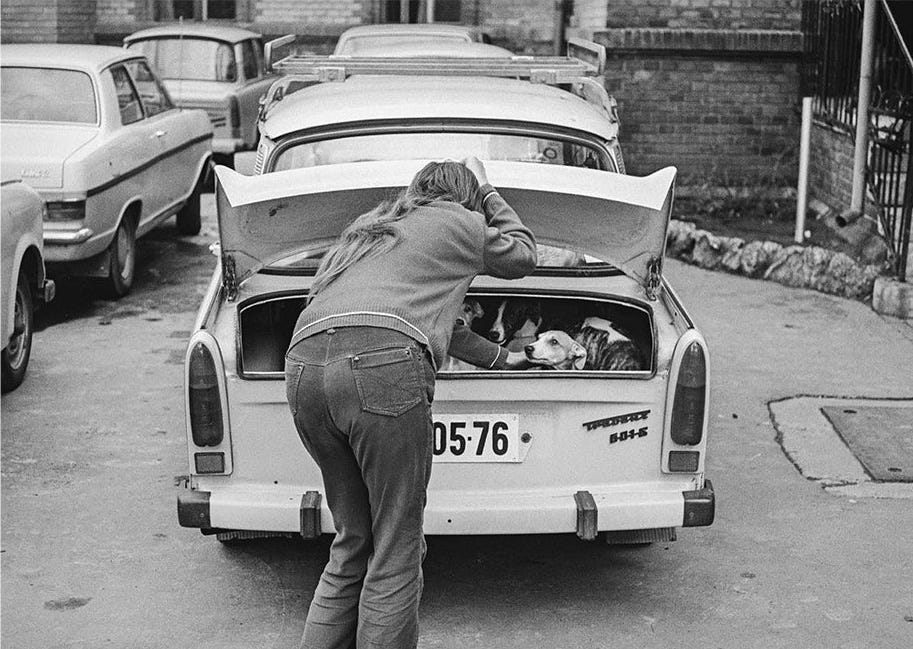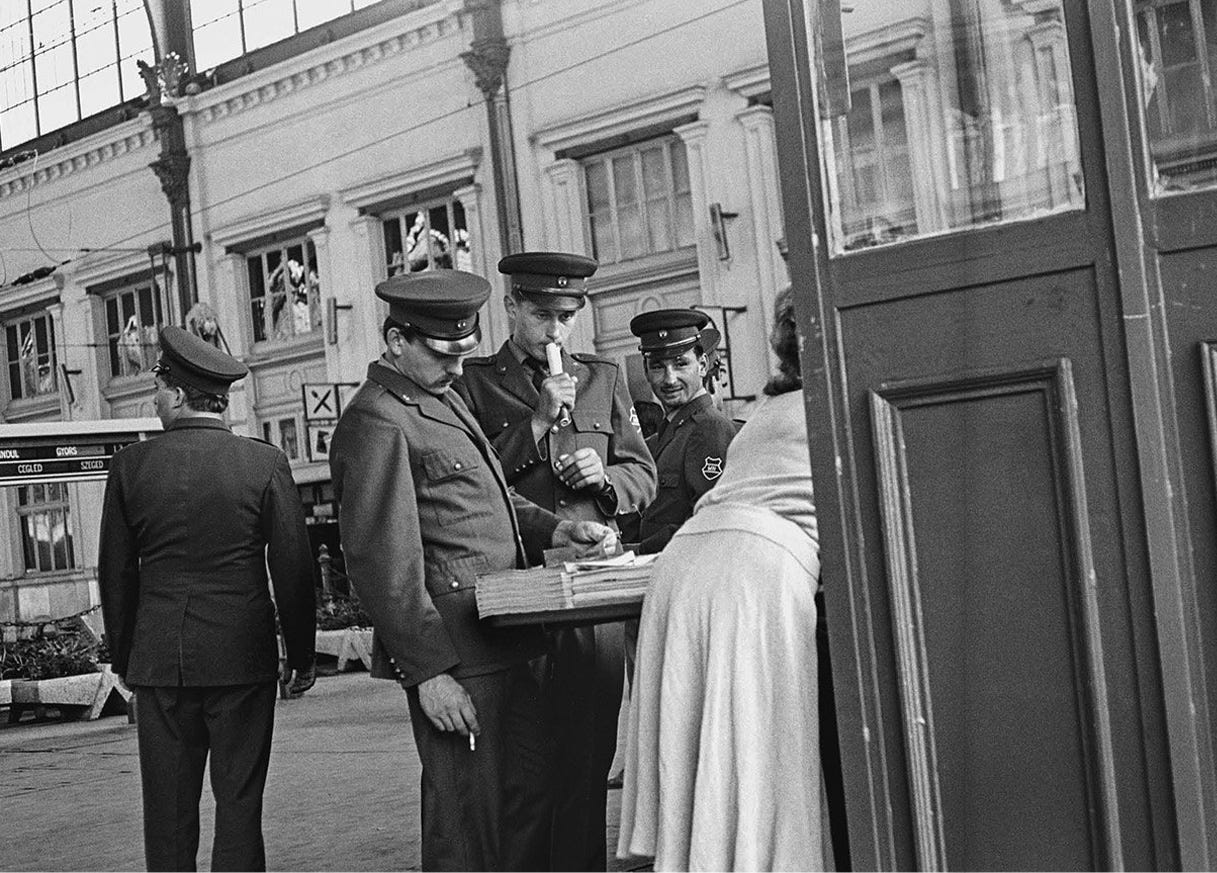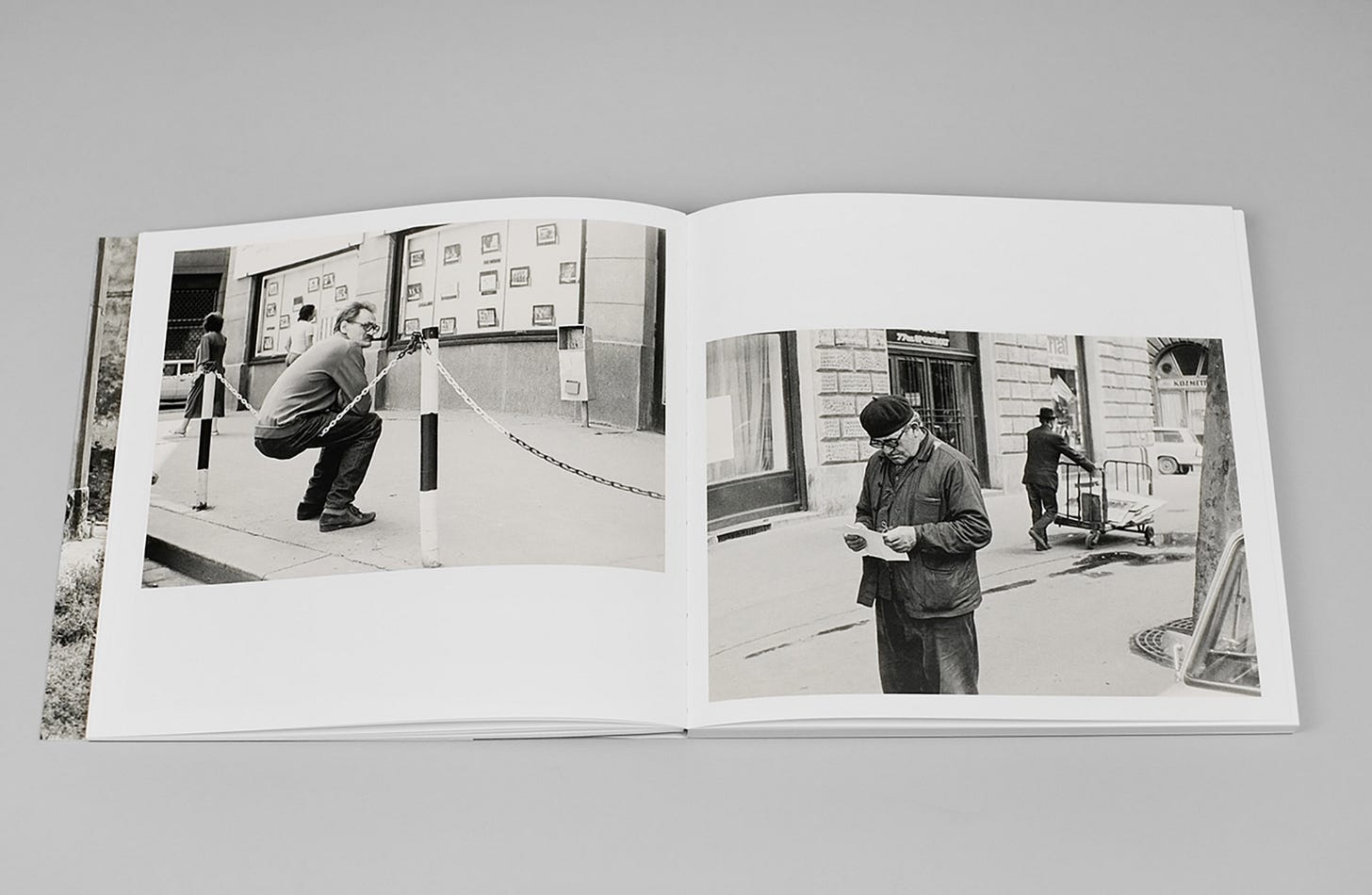#offchain
About this series
'Minor Mysteries' by Hans van der Meer is a photo book published by Fw:Books about his early work made in and around Budapest, in the mid 1980s, during his time as a student at Rijksacademie Amsterdam.
'Minor Mysteries' provides insight into what fascinated Van der Meer as a young, curious outsider in a country that at first sight seemed alienating and distant, but where he quickly found his way. Without a preconceived plan, he let his intuition guide him, wandering the streets like a director collecting scenes for a script. This is how he stumbled upon wonderous, playful, at times tragicomic situations. In retrospect, the series is like a monument to an era in transition. An era that was nearing its end, in a city in the heart of Europe, that looked battered under the weight of history, but with hope for something new.
In 1982 I visited Hungary for the first time for about five days with my then-girlfriend. It was a hot September week, so after a short stay in Budapest, we went to the Balaton. Nevertheless, the few pictures I took did not let go of me. Somehow, they told me that it was time to find out what I really wanted to do – in photography and in my life. After having completed a three-year study program in Technical Photography in 1976 and several jobs I applied to study at the Rijksacademie, where I was admitted in August 1983 to experiment and deepen my visual language.
In October that year, there was a second, even larger, demonstration against the crazy nuclear rat race in The Hague. A few months later I phoned the Ministry of Culture to ask for advice: ‘What do I need to do if I wanted to work as a photographer in Hungary?’ It turned out there was a cultural exchange program and that a short visit would be possible, courtesy of the Hungarian Ministry of Culture.
Arriving at the end of May 1984, I was made very welcome and I have warm memories of these two weeks. A cultural program was organized for me as well as meetings with young local photographers. There were no obstacles to a longer stay. In September I returned to Budapest, rented a flat in Bartok Béla Street, took my Leica M3 and 50mm Summicron lens and started, somewhat randomly, walking the streets.
Like many other young photographers at that time, I was inspired by legendary names renowned for their human approach. In particular the poetry of André Kertész, the humorous style of Robert Doisneau and the surrealism and sensitivity of Henri Cartier-Bresson. At first my photographs were a study of body language in all kinds of, often puzzling, situations: people bending over (Shoelaces? Dropped keys?); crawling out of holes; hanging on window bars; turning figures alongside bent lampposts, awkwardly pushing an old washing machine along a pavement and so on. I was constantly on the move. Reacting quickly, sometimes without even looking through the viewfinder these situations, isolated into images became even more enigmatic.
Forty years after Stalin, Churchill and Roosevelt divided Europe, like elsewhere in the Eastern Bloc, the people in Hungary were dealing with a situation they had not asked for. I was moved by the everyday reality of people’s lives. It was sad to see elderly people collecting cartons for a few forints, abandoned by their government on a tiny pension. Those images didn’t seem accidental. They raised an underlying question: in what way did these minor mysteries refer to a bigger picture?
Although I occasionally visited smaller towns outside of the city, I spent most of my time in the capital and explored many of its districts. On the Pest side, I often found the right amount of people (not too many – that didn’t work for me), just enough life to explore. Apart from taking photographs I made friends, learned to understand the country better and stayed with interruptions for almost a year. In June 1986, during the final phase of Communism, the reformist Soviet leader Mikhail Gorbachev visited Hungary and during that same month, I took my last photographs.
The photo book shows a wider selection from the archive of Hans van der Meer and how he was playing with photography to talk about life, far away from news events.
Artist Bio
Hans van der Meer was born in Leimuiden in the Netherlands in 1955. He has published numerous books. His work is included in major international collections and he has had solo exhibitions in venues such as the National Museum for Photography, Film and Television in the UK, the Stedelijk Museum Amsterdam, the Centro Português de Fotografia, Porto, National Museum of Modern Art in Kyoto. He was a contributing editor of Useful Photography.
Photographer: Hans van der Meer
Instagram: @fw.books
Photo book: Minor Mysteries
Photos copyright Hans van der Meer
DRAWLIGHTS | 1/1 – one post/one photographer, weekly. Off-chain and on-chain. By Peter Nitsch, lens-based artist, a member of Jenny Metaverse and lifetime Member of the Royal Photographic Society of Thailand.











